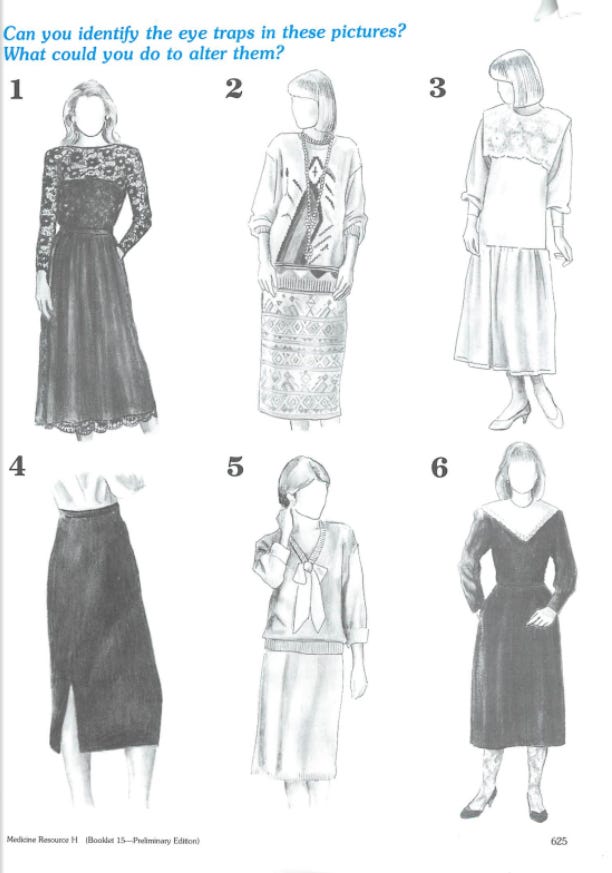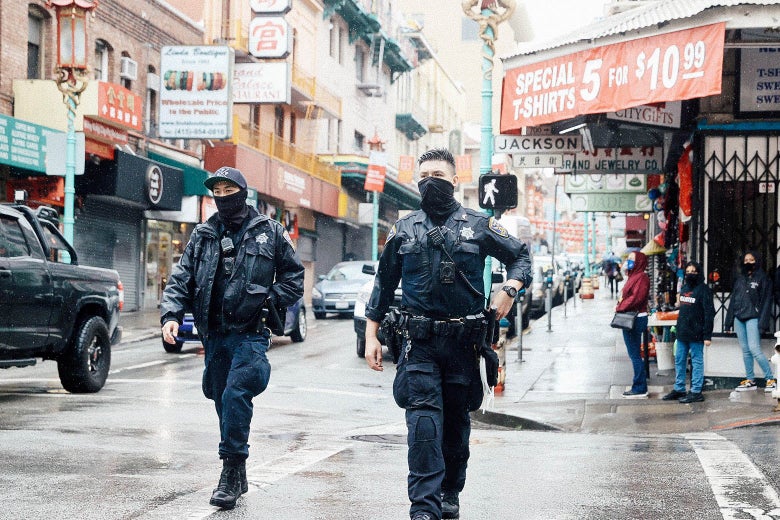Why the Atlanta Massacre Triggered a Conversation About Purity Culture
The problem with purity culture is not Christianity. The problem is that its extremes are not Christian at all.

It always happens. Every time there is a mass shooting—often before we even know the number and identity of victims—there’s a desperate and immediate quest to know who was the shooter and what were his motives. Part of this is understandable, human, and necessary. When innocent women and men are gunned down in cold blood something in our spirits cries out, “Why?”
But another part of this quest for an immediate explanation is toxic and destructive. Every single mass shooter (and, sadly, there are many of them) becomes an immediate weapon in the culture war. Did the shooter wear the red jersey or the blue jersey? Does he fit or defy an existing narrative?
Soon enough, the partisan argument drowns out the answer to the necessary question. We still need to know the reasons each shooter kills—no matter whose partisan or religious ox is gored.
And that brings me to the Atlanta shooter (I will not use his name). Last week a young man walked into three metro Atlanta massage parlors and killed eight people, including six Asian women. Why did he do it? According to police, the shooter said he suffered from “sex addiction” and shot the women because “they were a temptation for him he wanted to eliminate.”
Does that mean there was no racial component to the killing? Well, no. For one thing, we don’t automatically take a killer’s word as the final explanation for his motives. For another thing, his actions provide their own testimony. The identity of his victims is plain to see. Moreover, there are disturbing cultural patterns that sexualize and exploit Asian women. There is much we still don’t know. At the very least we can and should mourn with our Asian American brothers and sisters and understand (and share!) their heightened concerns.
In the days following the shooting, however, the evidence of the shooter’s sexual confusion and dysfunction continued to mount. And so it’s important to focus on what we do know, on where the evidence is leading us now. The shooter is a Christian young man, baptized in a local Baptist church. He struggled so deeply with sexual sin that he was a patient at a local Evangelical treatment facility, called HopeQuest. He reportedly told a former roommate at a different recovery center that his “very salvation was at stake” if he couldn’t overcome his sexual sin.
And with these revelations, suddenly the Christian part of the internet broke out into a debate about Evangelical purity culture. The shooter’s stated beliefs and deadly actions represented a hyper-violent and extreme manifestation of a toxic theology that long corrupted a slice of Evangelical Christianity. Those same beliefs and actions brought an immense amount of pain bubbling to the surface of the Christian conversation. Soon enough the conversation burst into mainstream media and splashed across the virtual pages of the New York Times and the Washington Post.
But first, let’s define our terms. “Purity culture” is not a synonym for traditional Christian teachings about sexual morality—specifically the belief that sex is reserved for a marriage between a man and a woman. No, “purity culture” refers to the elaborate set of extra-biblical rituals and teachings that became popular in the 1990s and were designed to build safeguards and “strongholds” of sexual purity in Christian communities.
The Gospel Coalition’s Joe Carter has written an excellent FAQ about purity culture, and he identifies a number of common characteristics, including specific “purity pledges” that young men and women would take, father-daughter “purity balls” where dads would often given their daughters “purity rings” to symbolize their commitment to chastity, and strict “courtship” relationships that would often feature parent-supervised meetings in lieu of dates and written “purity contracts” prohibiting physical contact.
All of this was distinctly different from what one might call normal or conventional Christian sexual teaching. I’ll give you some examples, from my own Evangelical upbringing.
As many readers know, I grew up in the Church of Christ, and while my church was more fundamentalist than most, our teaching about sex was mainstream. It represented down-the-line Christian orthodoxy, but it was stripped of the bells and whistles of the purity movement. Our youth group talked about sex a lot (we were teenagers, after all), but there were no rituals. There were no rings. We’d never heard of “courtship.” We weren’t perfect, but we tried to do the right thing.
Fast-forward four years. My college girlfriend was devoted to purity culture, and when she tried to bring me into the fold, I felt like I’d entered a parallel Christian dimension. We both agreed on the top-line moral questions, but she believed so much more.
We didn’t date. We “courted.” And one condition of the courtship was that I attend a week’s worth of “seminars” held by Bill Gothard, then the head of the Institute in Basic Life Principles. At the time Gothard was a powerful Christian celebrity. His seminars could pack arenas, and hundreds of thousands of Christian families hung on his every word.
His words, however, appalled me. Premarital sexual sin was viewed as defining, status-changing rebellion. You could be forgiven, but if you were no longer a virgin, your life, your wedding, and your marriage would be diminished as a result. You would walk down the aisle fundamentally tarnished, having lost something you could never get back.
Purity was such a special virtue that God would reward purity with increased beauty, creating a “Godly countenance.” But that beauty must be concealed. Women bore a particular burden to protect “visual” men from temptation. Thus, modesty rules were strict. For example Gothard materials condemned even remarkably modest clothing if it contained what he called an “eye trap.” Here’s an example, posted by a former Gothard student:
(Gothard was later forced out of his ministry after facing dozens of allegations of sexual misconduct.)
By the late 1990s, the purity movement was spreading like wildfire. Josh Harris’s book I Kissed Dating Goodbye sold more than a million copies, and it urged Christian young people to abandon dating entirely. Movements or ministries like “True Love Waits” or the “Silver Ring Thing” elevated purity pledges and placed great emphasis on teenage purity.
(Harris wrote his book when he was only 21. He has since repudiated the book, separated from his wife, and renounced his Christian faith.)
While some purity teaching was both orthodox and beneficial, other teaching kept lurching towards the same extremes. Time and again purity acolytes repeated the same themes. Sexual sin is a defining sin. Women bore a special burden to protect young men from lust and (later) satisfy their husband’s desires.
In one particularly pernicious ritual, youth pastors and summer camps would show Christian teenagers two pennies (or other coins), one brand new and others that had been in circulation. The brand new penny was “pure.” The dirty pennies were “handled,” and the more they were “handled,” the dirtier they became.
At the same time, some purity acolytes taught what the writer Katelyn Beaty has critiqued as a form of “sexual prosperity gospel.” Purity now would mean great sex later. It was God’s reward for your youthful obedience. Chastity was the pathway to sexual satisfaction.
It’s important to emphasize how much the extreme teachings were contrary to the Gospel. And by “contrary to the Gospel” I don’t mean that the orthodox sexual ethic is contrary to God’s plan or that sexual sin can’t be very serious indeed. Instead, I’m referring to the perverted theology of the abusive purity movement.
Are Christians defined forever by their sin? No. They are not “dirty.” They are white as snow:
Come now, let us reason together, says the Lord:
though your sins are like scarlet,
they shall be as white as snow;
though they are red like crimson,
they shall become like wool.
Do women pollute men’s hearts with their beauty? Is the sight of women the source of male sin? No. Evil comes from within:
For from within, out of the heart of man, come evil thoughts, sexual immorality, theft, murder, adultery, coveting, wickedness, deceit, sensuality, envy, slander, pride, foolishness. All these evil things come from within, and they defile a person.
Denying these eternal truths did and does tremendous damage to young hearts and minds. Singling out sexual sin as particularly pernicious and life-defining leads to fear and panic when people do stumble and fall. Perversely enough, it can even enable sinful conduct by leading people to feel hopeless when or if they do fail. “I’m ruined anyway. What’s the point of further restraint?”
Placing responsibility for male purity on women harms women. It creates an impossible burden. You cannot oppress women enough to protect men from themselves. You can ban porn, ban explicit TV and movies of all types, put women in long dresses, prohibit makeup, and require courtship contracts, and you still will not solve the problem of sin.
In fact, placing such burdens on women does not make the church more Christian. It instead connects the church to millennia of oppressive practices across the world and across faiths that have put women in a position of covered bondage all for the sake of avoiding the lustful male gaze.
I saw the costs of an abusive purity culture with my own eyes. During the late 1990s, my wife and I served as volunteer youth directors in our church youth group. The youth pastor had just become a purity acolyte. Over our objection he prohibited dating. He condemned most forms of physical contact before marriage. Soon enough, I found myself consoling 17 year-olds who believed they’d already harmed their future marriage merely because they kissed their prom date.
(Shortly after he initiated the dating ban, the youth pastor resigned after being caught engaging in inappropriate sexual activity online.)
When the youth pastor left in scandal, I became interim youth pastor, and we reversed course. We held to Christian orthodoxy but we rejected the idolization of purity. Sin does not define the Christian. Christ does.
And this brings us back to Atlanta. When many Christian women (and women who’d left the church) heard the killer’s motive, they thought, “That’s an extreme version of an idea that I was taught for years—that men need to protect themselves from women, that they need to protect themselves from me.”
At its most benign, purity culture put unnecessary burdens on young men and (especially) young women. In its more harmful manifestations, however, it has enabled abuse, and at the extreme edge the male demand that women save them from their own sin can lead to murderous rage.
As this conversation unfolds, it’s important to keep two things in mind. First, the purity culture I’m describing never fully captured the church. Millions of people have thankfully lived their entire Christian lives free from the extremes I’ve described above.
Second, however, it’s absolutely vital that Christians do not leave the task of confronting extremes to a secular world and media that is often hostile to (or doesn’t understand) Christian orthodoxy itself. The secular critique is typically all confrontation, no redemption.
The Christian response, however, requires both confrontation and redemption. It recognizes that Christ holds the answer when the church fails. As I’ve written before when addressing the failures and faults of the purity movement, through Christ even stories of past pain and suffering can be redeemed and transformed into instruments of grace and mercy.
Shortly after we received the first reports about the Atlanta killer’s motives, my friend and Southeastern Baptist Theological Seminary professor Karen Swallow Prior tweeted two insightful words, “Culture cultivates.” A culture that defines a person by their sexual sin cultivates misery. When it places women in a position of guarding a man’s heart, it cultivates abuse. And sometimes, when a man’s heart is particularly dark, it can even cultivate murder.
The problem with purity culture is not Christianity. The problem with purity culture is that its extremes are not Christian at all.







 © Reuters/STRINGER Rani Khan looks at one of her students during a tailoring lesson in Islamabad
© Reuters/STRINGER Rani Khan looks at one of her students during a tailoring lesson in Islamabad





 San Francisco police officers on a foot patrol in Chinatown on Thursday. Justin Sullivan/Getty Images
San Francisco police officers on a foot patrol in Chinatown on Thursday. Justin Sullivan/Getty Images

